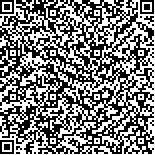| 史安臣,王慕蓉,杨 洋.肿瘤细胞外泌体介导免疫逃逸的研究进展[J].中国肿瘤,2019,28(8):602-607. |
| 肿瘤细胞外泌体介导免疫逃逸的研究进展 |
| Research Progress on Tumor Cell Exosome-mediated Immune Escape |
| 投稿时间:2019-04-09 |
| DOI:10.11735/j.issn.1004-0242.2019.08.A008 |
|
 |
| 中文关键词: 肿瘤细胞 外泌体 免疫逃逸 肿瘤微环境 |
| 英文关键词:tumor cells exosome immune escape tumor microenvironment |
| 基金项目:兰州大学第二临床医学院萃英学子科研培育计划(CYXZ-14);兰州大学第二临床医学院萃英学子科研培育计划(CYXZ-06);兰州大学君政基金(LZU-JZH2118) |
|
| 摘要点击次数: 2814 |
| 全文下载次数: 680 |
| 中文摘要: |
| 摘 要:外泌体是纳米尺度的胞外囊泡结构,由细胞分泌,其内容物较多,可介导多种生物作用。肿瘤细胞外泌体含有肿瘤抗原及介导肿瘤免疫逃逸的相关蛋白成分等,可参与有利于肿瘤进展的微环境的形成,并且能够为肿瘤细胞逃避免疫监视创造条件。不同癌细胞外泌体可通过不同机制介导免疫逃逸。该文就外泌体的形成与组成、在免疫抑制性肿瘤微环境形成中的作用及其介导免疫逃逸的机制进行综述。 |
| 英文摘要: |
| Abstract:Exosomes are extracellular vesicular structures of nanometer scale which are secreted by cells. They have many contents to mediate various biological functions. Exosomes derived from cancer cells contain tumor antigens and various protein components,which are involved in the formation of microenvironment conducive to tumor cell growth and immune escape. Exosomes from different cancer cells mediate immune escape through different mechanisms. This article reviews the formation and composition of exosomes,their roles in the tumor microenvironment and the mechanism of immune escape. |
|
在线阅读
查看全文 查看/发表评论 下载PDF阅读器 |